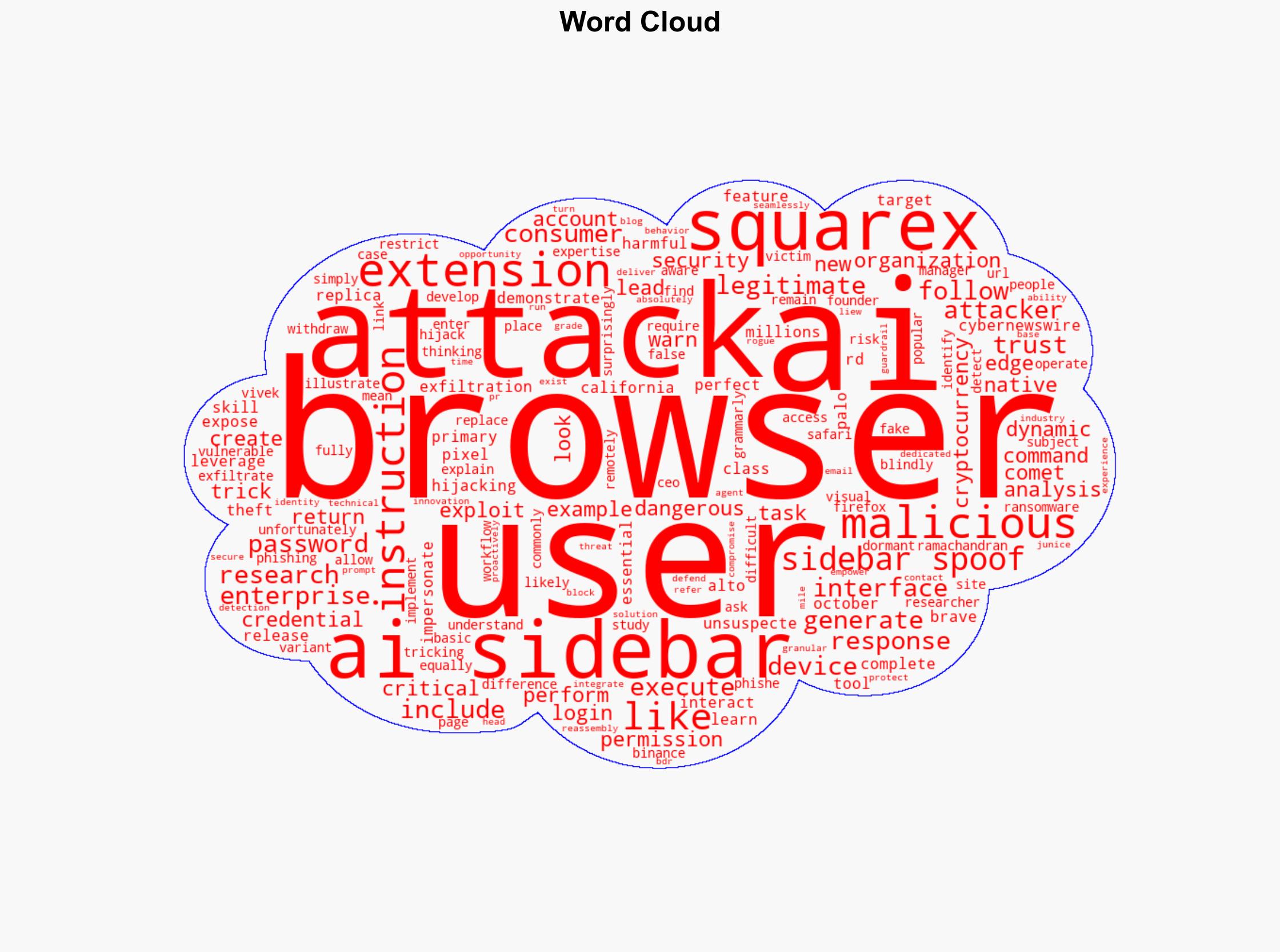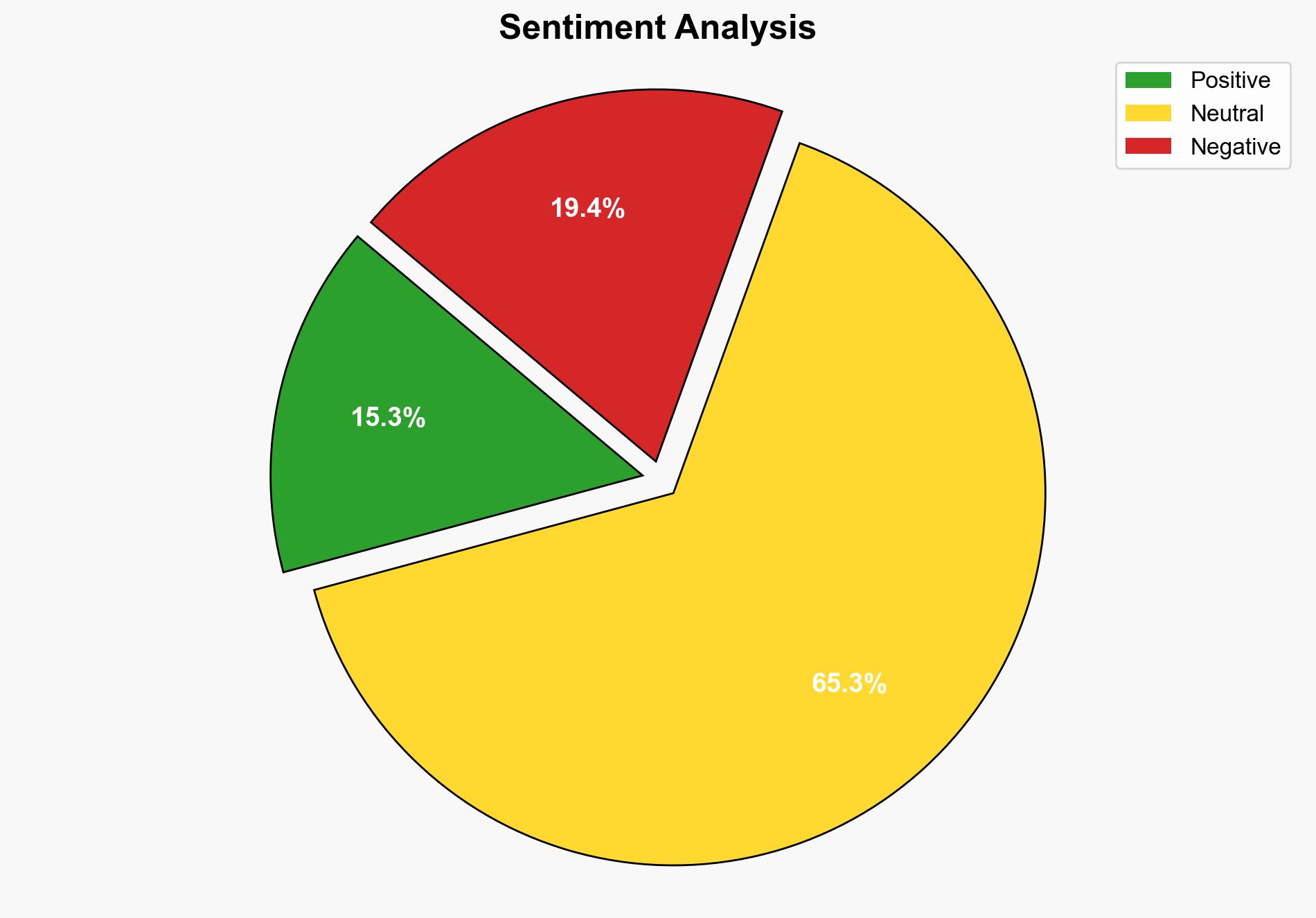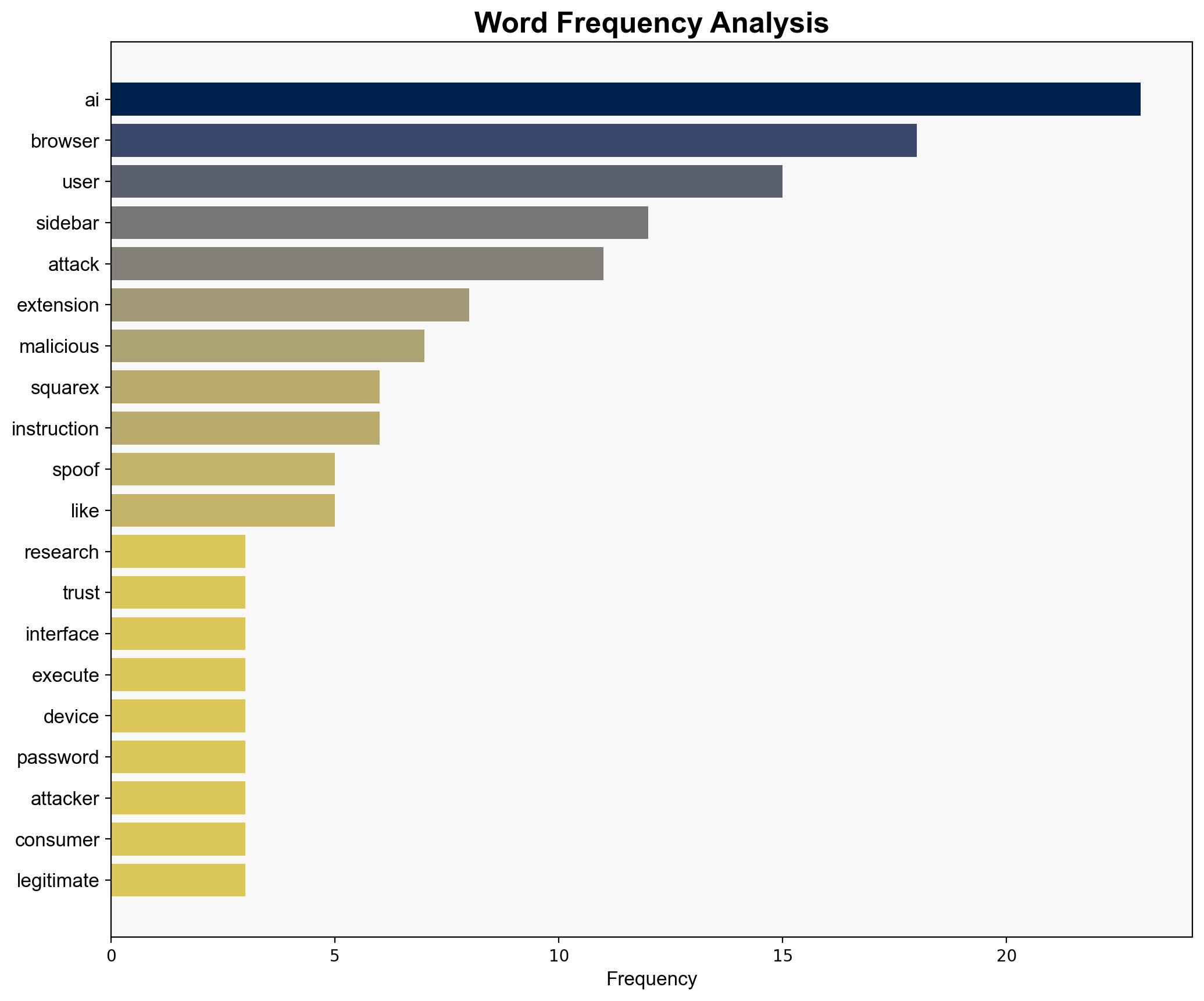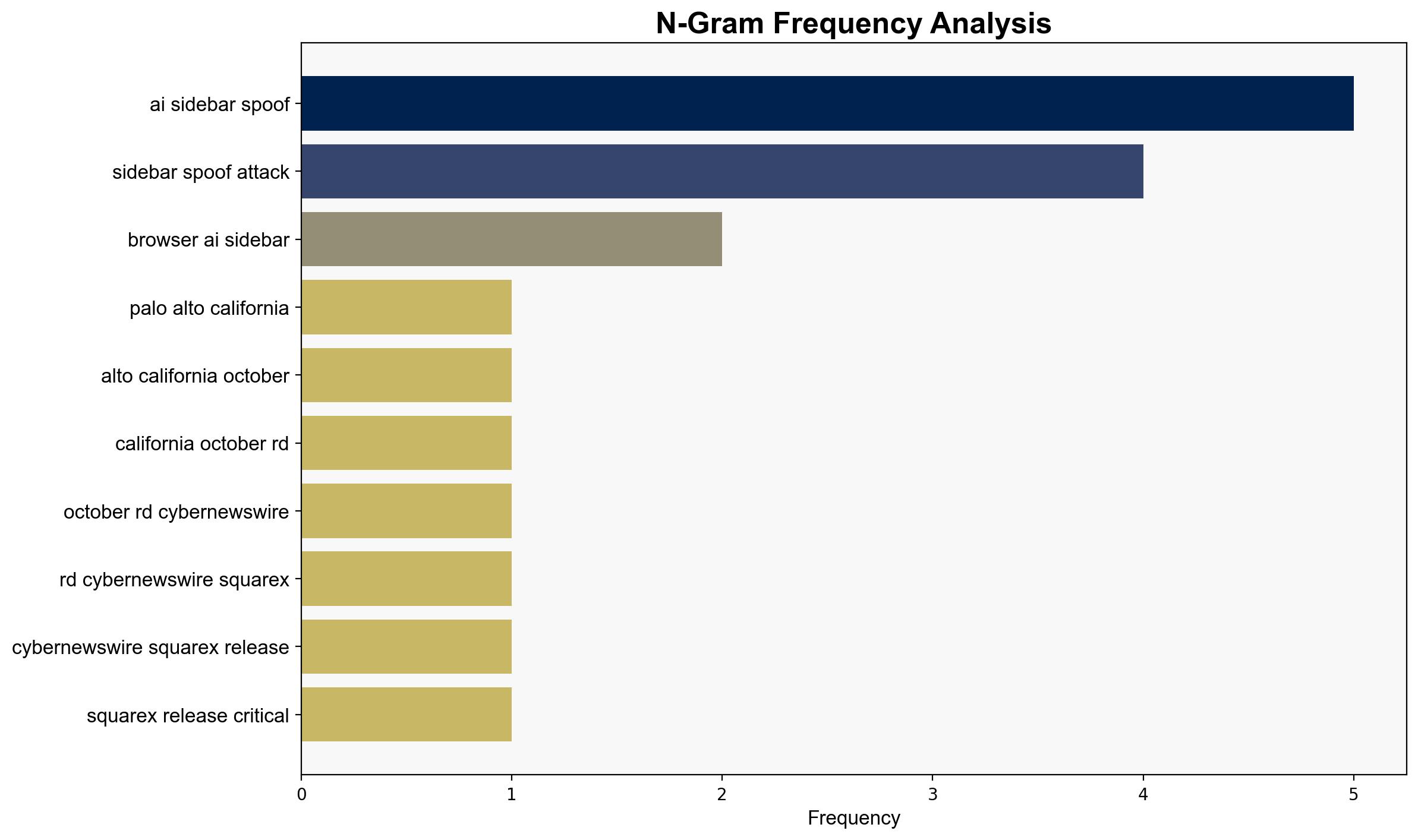AI Sidebar Spoofing Attack SquareX Uncovers Malicious Extensions that Impersonate AI Browser Sidebars – Next Big Future
Published on: 2025-10-23
Intelligence Report: AI Sidebar Spoofing Attack SquareX Uncovers Malicious Extensions that Impersonate AI Browser Sidebars – Next Big Future
1. BLUF (Bottom Line Up Front)
The most supported hypothesis is that malicious actors are exploiting AI browser sidebars to conduct credential theft and device hijacking through sophisticated spoofing attacks. Confidence level is moderate due to the novelty of the attack vector and limited scope of current research. Immediate action is recommended to enhance browser security protocols and user awareness.
2. Competing Hypotheses
1. **Hypothesis A**: Malicious actors are specifically targeting AI browser sidebars to exploit user trust and execute credential theft and device hijacking.
2. **Hypothesis B**: The discovery of AI sidebar spoofing is part of a broader trend of exploiting browser extensions, with AI sidebars being one of many targets.
Using ACH 2.0, Hypothesis A is better supported due to the detailed case studies provided, which specifically demonstrate the exploitation of AI sidebars. Hypothesis B lacks specificity and does not account for the targeted nature of the attacks described.
3. Key Assumptions and Red Flags
– **Assumptions**: It is assumed that AI sidebars are inherently trusted by users and that this trust is being exploited. Another assumption is that current browser security measures are insufficient to detect such spoofing attacks.
– **Red Flags**: The novelty of the attack vector suggests potential gaps in detection and reporting. The reliance on a single research source (SquareX) could indicate bias or limited perspective.
4. Implications and Strategic Risks
The exploitation of AI sidebars could lead to widespread credential theft and device hijacking, impacting both individual users and enterprises. This attack vector could escalate into more sophisticated phishing and ransomware campaigns, potentially causing significant economic and reputational damage. The psychological impact of eroding trust in AI tools could also slow the adoption of AI technologies.
5. Recommendations and Outlook
- Enhance browser security by implementing dynamic analysis of extension behavior in real-time.
- Increase user awareness and training on identifying phishing attempts and spoofed interfaces.
- Develop and deploy browser-native guardrails to block malicious instructions.
- Scenario Projections:
- Best Case: Rapid adaptation of security measures mitigates the threat with minimal impact.
- Worst Case: Widespread exploitation leads to significant financial and data losses.
- Most Likely: Gradual increase in attacks as awareness and defenses improve over time.
6. Key Individuals and Entities
Vivek Ramachandran, SquareX
7. Thematic Tags
national security threats, cybersecurity, counter-terrorism, regional focus




